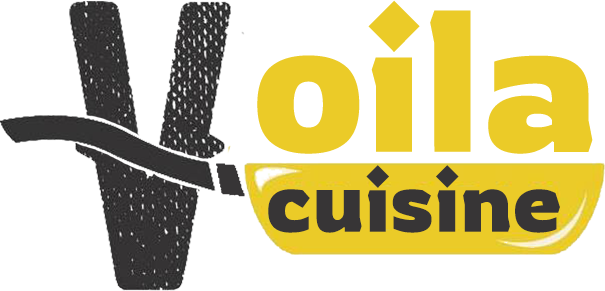When people search “why is 24ot1jxa bad”, they want clarity about what it means, why it raises red flags, and whether they should avoid it. In the digital age, even unfamiliar terms or codes can pose hidden risks, from security concerns to performance issues. This article provides a comprehensive guide that breaks down what 24ot1jxa is believed to represent, why it is considered problematic, and what users can learn to stay safe.
What Is 24ot1jxa?
The phrase 24ot1jxa is not a household term. It looks like a string of characters or code that could be connected to digital activities, systems, or identifiers. What makes it stand out is that it has attracted suspicion in online discussions.
Users often wonder: Is it malware? Is it linked to errors? Or is it simply an obscure, poorly documented tool? While the exact definition remains unclear, the important point is that it is widely viewed as unreliable, confusing, or potentially risky.
Why Is 24o-t1jxa Bad?
The main reasons 24ot1jxa is considered “bad” stem from how it is perceived in terms of safety, transparency, and reliability.
-
Lack of clarity – Without clear documentation, people find it difficult to trust.
-
Association with risk – Many online warnings mention security issues.
-
Negative user experiences – Reports often highlight system slowdowns or odd behavior.
-
Suspicious context – Its obscure nature makes it appear unsafe.
This combination has led to the common question: Why is 24o-t1jxa bad?
The Risks of 24ot1jxa
To understand the risks, it helps to look at how 24ot1jxa could affect users.
Security Risks
One of the most concerning issues is digital security. Anything unidentified or unclear can potentially hide malware, spyware, or harmful code. Since 24ot1jxa lacks transparency, users fear that it could compromise personal data.
Privacy Concerns
Another worry is data privacy. Unfamiliar digital codes sometimes involve hidden tracking or unwanted collection of user information. Without knowing what 24ot1jxa does, privacy cannot be guaranteed.
Performance Issues
Some users claim that references to 24ot1jxa cause slowdowns or unexpected errors in their systems. Poor performance is another reason it earns a “bad” reputation.
Compatibility Problems
Because it is not clearly defined, 24ot1jxa may conflict with existing tools, software, or platforms. This makes it unreliable for both personal and professional use.
Why Is 24o t1jxa Bad for Businesses?
For businesses, the stakes are higher. Any questionable digital identifier can cause:
-
Operational risks – Interrupting smooth workflows or causing downtime.
-
Compliance issues – If unverified, it might not meet data regulations.
-
Reputation harm – Using questionable tools can reduce customer trust.
This is why businesses often avoid unverified or unclear elements like 24ot1jxa.
Community Opinions on 24ot1jxa
Online communities often shape how terms like 24ot1jxa are treated. Many users recommend avoiding it, citing concerns about trust and safety. Discussions on forums and blogs generally reflect caution rather than curiosity.
This collective view adds credibility to the idea that 24ot1jxa is “bad” for both casual and professional use.
Lessons from 24ot1jxa
The issues surrounding 24ot1jxa offer valuable lessons:
-
Transparency matters – If a tool or code lacks explanation, it should be questioned.
-
Community feedback is important – Warnings from other users help prevent mistakes.
-
Avoid unknowns – Safer alternatives are usually available.
-
Security comes first – Digital risks can cause long-term harm if ignored.
By learning from suspicious identifiers like 24ot1jxa, users can become more cautious and smarter in the digital world.
Why is 24o t1jxa Bad for Long-Term Use?
Some issues may not show up immediately but can appear over time. If 24ot1jxa is used long-term, potential problems include:
-
Gradual system slowdowns.
-
Increased vulnerability to cyber threats.
-
Loss of trust in digital operations.
-
Difficulty in resolving technical issues caused by it.
These long-term risks reinforce the warning that 24ot1jxa should be avoided.
Safer Alternatives to 24ot1jxa
Instead of relying on questionable identifiers, users should:
-
Choose well-documented tools.
-
Verify sources before downloading or installing anything.
-
Look for community support and reviews.
-
Stay updated with official solutions from trusted developers.
Safe alternatives ensure smoother experiences without the risks linked to 24ot1jxa.
Why Awareness of 24ot1jxa Matters
Awareness is the first step to digital safety. The question “why is 24ot1jxa” shows that users are alert to potential threats. By spreading awareness, communities help others recognize and avoid risky elements.
In today’s online environment, where cyber threats evolve quickly, questioning the unknown is a smart strategy.
The Role of Community in Highlighting 24ot1jxa
Digital communities often raise alarms when they find something suspicious. In the case of 24ot1jxa, warnings from users act as early protection. Forums, blogs, and shared experiences all contribute to collective awareness.
This shared knowledge is one of the most powerful tools in maintaining digital safety.
Why Is 24o-t1jxa Bad for Casual Users?
Casual users may think that unknown digital terms don’t affect them, but that is not always true. Even small interactions with unverified codes can cause problems like:
-
Data leaks.
-
Device performance issues.
-
Hidden software errors.
This makes it equally important for everyday users to avoid 24ot1jxa.
Future of 24ot1jxa
Looking ahead, the reputation of 24ot1jxa will depend on whether more clarity emerges. If it turns out to be harmless, trust might grow. But if evidence of risks continues, users will avoid it even more.
For now, it remains a digital unknown that people are better off avoiding.
Why Is 24o-t1jxa Bad? Final Insights
At its core, the reason why 24ot1jxa is bad comes down to:
-
A lack of clear identity.
-
Its association with potential risks.
-
Community warnings and negative experiences.
The digital world thrives on trust, and without it, users are right to be cautious.
Conclusion
The question, “Why is 24o-t1jxa bad?” highlights the importance of skepticism in the digital age. Although the term itself is unclear, its reputation shows that unverified identifiers can pose serious risks. From security threats to performance issues, the warnings cannot be ignored.
For individuals, the lesson is to stay alert and prioritize transparency. For businesses, the message is even stronger: avoid unverified tools that may compromise security or credibility.
Ultimately, the safest approach is awareness. By learning from cases like 24ot1jxa, users can make informed choices that protect their data, systems, and digital well-being.

